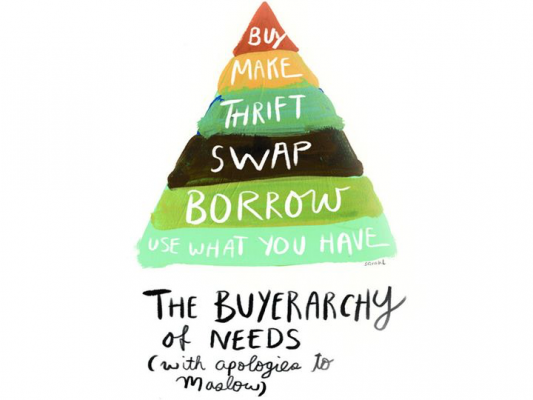It’s so easy nowadays for modern consumers to view their personal belongings as disposable. When things break, and even sometimes when they haven’t yet, modern consumers will often just toss those things out and simply replace them with the latest and “greatest.”
The Age of Obsolescence
This idea of obsolescence is a modern concept, one that has only recently overruled ideas such as simply mending a torn shirt, replacing a lost button, or replacing a machine component.
Most modern devices and appliances will likely break down at some point, but that point is often further down the line than we think. Malfunctioning doesn’t necessitate a full replacement. Instead, you can repair or mend your goods and extend their lifespan without hurting your bank account.
Cost is a factor that is often overlooked in modern times. The overall cost of being able to make crafts at home, or fix small problems, is far less than that of acquiring or replacing things.
Preventing an Unsustainable Demand
A big part of sustainability is preventative. Let’s examine children’s toys as an example. Toy production demands a lot of plastic, and if we give our kids alternatives, or encourage them to make better use out of what they already have, we can reduce the demand for plastic production at its epicenter.
Recent polls have revealed that over a quarter of parents admit to tossing away toys that work perfectly well, and most say their kids have an average of four plastic toys that they don’t play with. The problem here is that these toys, made primarily of plastic, often end up in landfills.
Related: The Plastic Epidemic
So what is the solution? Begin using more homemade crafts and toys. Not only will crafting your own things prevent unnecessary consumption, it can also be an excellent chance to bond with your family and save some money for more important matters. Your family can learn valuable skills, such as how to use different tools, how to work with different materials, and how to maintain their belongings over time. However, there are going to be circumstances where you are unable to craft goods, or simply don’t have the necessary materials, skills, or resources. But don’t jump straight to buying things either – consider other options first. The Buyerarchy of Needs is an excellent guide for determining when a purchase or replacement is necessary.
The Buyerarchy of Needs

Buyerarchy of Needs. Photo credit: Sarah Lazarovic
The Buyerarchy of Needs Triangle is built upon a foundation of using what you have. This triangle walks you through what you should do before deciding to purchase or replace.
-
If it breaks, repair or replace it. If it tears or rips, mending is the key.
-
If you don’t have what you need, you can borrow it.
-
If no one has it to borrow, or you need it on a more permanent basis, you can swap it for something you already have (bringing us right back to the foundation of using what you have).
-
If no one has what you need, then thrifting is the way to go, because someone else has likely already tossed out what you wanted to borrow or swap.
-
If your thrifting endeavors amount to nothing, then you can start making what you need out of what you already have (again, focusing efforts on sustainability at its core, and the prevention of unnecessary manufacturing).
-
Worst case, you buy it.

